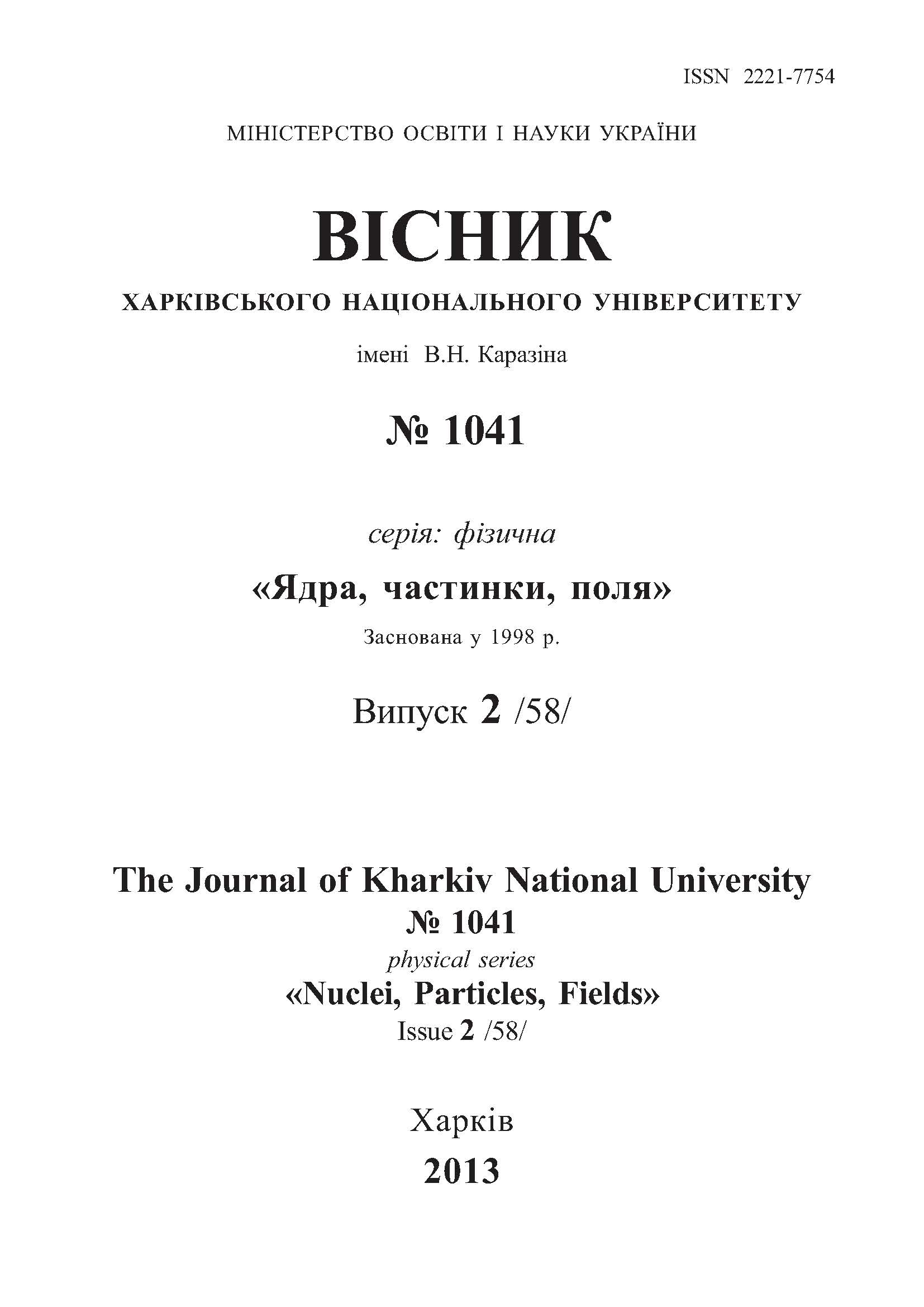Virtual Water Molecule Dissociation in External Electromagnetic Fields
Abstract
The model is proposed for describing a real water molecule by its two-dimensional analog, namely, the virtual molecule (VM). The proposed VM model provides the condition of coincidence between the fundamental eigenfrequencies of the real molecule and its virtual analog. The other VM parameters (bond length and atomic mass) are renormalized so that the molecule should steadily exist for a long time interval. Linear dynamics of VM atoms in the field of a monochromatic electromagnetic wave has been investigated. It is shown that under the action of an external electromagnetic field on the molecule at a resonance frequency, secular modes of vibrations are observed. The last ones are characterized by a time-linear growth of atomic oscillation amplitudes. The influence of the turn on of an external force at the time of stabilization of eigenfrequencies of the VM on the stability of VM atomic oscillations were made. It is shown that in some cases breaking of one of the VM bonds inevitably leads to the VM dissociation as a whole. As a result of numerical simulation, it has been established that the bond breaking has a threshold character, i.e., dissociation is not observed at the external force, which is below a certain value. In the region of forces exceeding the threshold values, the variation in the external electromagnetic field frequency is insensitive to the resonance effects that are due to the presence of dedicated frequencies of the VM. It is demonstrated that in the region, where the H–O bond breaking always takes place, there exist the H–H bond stability islands. Optimum parameters of VM dissociation have been determined.
Downloads
References
Zewail A.H. Femtochemistry: Atomic-Scale Dynamics of the Chemical Bond. Feature article // J. Phys. Chem. A. – 2000. – Vol.104. - P.5660-5694.
The Encyclopedia of Earth. http://www.eoearth.org
Ivanova E.A., Krivtsov A.M. Upravlenie energiej mnogoatomnoj molekuly. V Sb. "Upravlenie v fiziko-tehnicheskih sistemah" -St. Petersburg: Nauka, 2004. - P. 197 – 212.
Volkovets I.B., Yefimov A.A., Krivtsov A.M., Tkachev P.V. Nonlinear dynamics and selective dissociation of triatomic molecule // Trudy SPbGPU. - 2004. - № 489. – S.152-161.
Melen F., Herman M. Vibrational Bands of HxNyOz Molecules // J. Phys. Chem. Ref. Data. - 1992. - Vol. 21, №4. - P.831 881.
United States Patent Number 4936961, Jun. 26, 1990.
Biografii velikih himikov. Perevod s nem. pod red. Bykova G.V. - M.: Mir, 1981.
Alforova A.V., Borts B.V., Tkachenko V.I. Dissociacija virtual'noj molekuly dvuokisi azota vo vneshnih elektromagnitnyh poljah // The Journal of Kharkiv National University, physical series “Nuclei, Particles, Fields”. – 2011. - №979– Iss.4(52). - S.46-55.
Nekrasov B.V. Osnovy obwej himii. T.1. - M.: Himija, 1973. – 656s.
Remi G. Kurs neorganicheskoj himii. T.1. - M.: Izdatel'stvo inostrannoj literatury, 1963. – 920s.
Authors who publish with this journal agree to the following terms:
- Authors retain copyright and grant the journal right of first publication with the work simultaneously licensed under a Creative Commons Attribution License that allows others to share the work with an acknowledgment of the work's authorship and initial publication in this journal.
- Authors are able to enter into separate, additional contractual arrangements for the non-exclusive distribution of the journal's published version of the work (e.g., post it to an institutional repository or publish it in a book), with an acknowledgment of its initial publication in this journal.
- Authors are permitted and encouraged to post their work online (e.g., in institutional repositories or on their website) prior to and during the submission process, as it can lead to productive exchanges, as well as earlier and greater citation of published work (See The Effect of Open Access).








